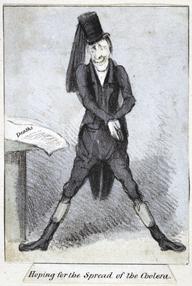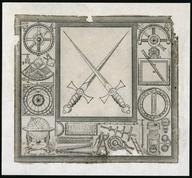







Engraving and letterpress. A singular operation / W. Nutter after J. Wales 1795, to create a new nose
English doctors witnessed this operation in 1793 in India, where the British Army was fighting Tipu Sahib, Sultan of Mysore (c1750-1799). Cowasjee, who is pictured, was a bullock driver for the British Army. He was taken prisoner by the enemy and his nose and one hand were cut off. A new nose was created through a skin-grafting process, using skin from his forehead and a wax template of the desired nose shape. The engraving was taken from a painting created ten months after the operation. The facial features appear natural. This method was far better than anything that had been developed in Europe and was adopted quickly, becoming known as the ‘Hindu method’. The cutting off of noses was often used as punishment in India and the caption reports that this type of operation was common.
Details
- Category:
- Art
- Object Number:
- 1984-153
- Materials:
- engraving, letterpress printing and paper
- Measurements:
-
overall: 412 mm x 272 mm
- type:
- credit:
- Grosvenor Prints




